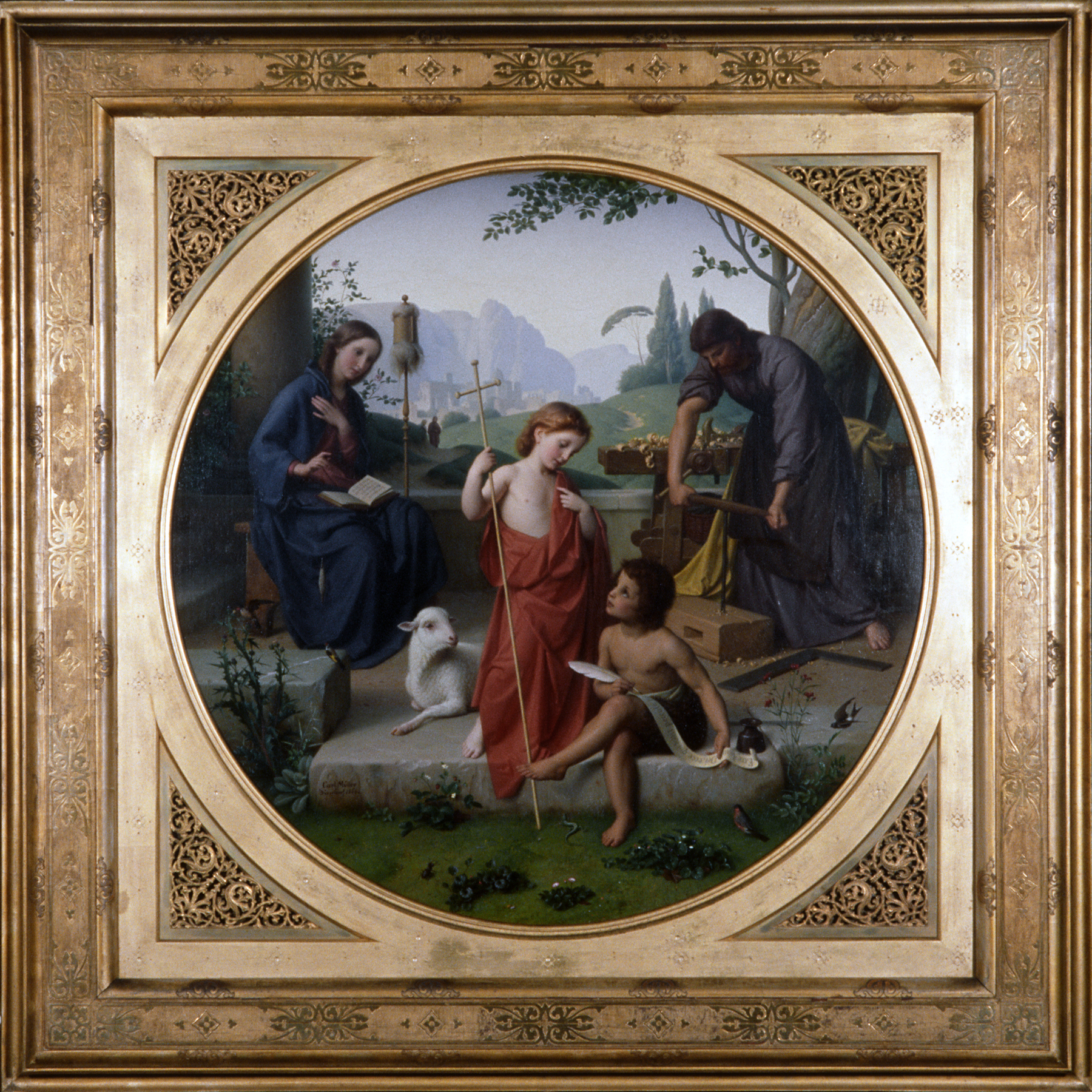Holy Family at Work, Karl Müller
Artwork Overview
Karl Müller, artist
1818–1893
Holy Family at Work,
1866
Where object was made: Germany
Material/technique: canvas; oil
Dimensions:
Canvas/Support (Height x Width x Depth): round 62 x 62 cm
Canvas/Support (Height x Width x Depth): 24 7/16 x 24 7/16 in
Frame Dimensions (Height x Width x Depth): 92.7 x 92.7 cm
Frame Dimensions (Height x Width x Depth): 36 1/2 x 36 1/2 in
Canvas/Support (Height x Width x Depth): round 62 x 62 cm
Canvas/Support (Height x Width x Depth): 24 7/16 x 24 7/16 in
Frame Dimensions (Height x Width x Depth): 92.7 x 92.7 cm
Frame Dimensions (Height x Width x Depth): 36 1/2 x 36 1/2 in
Credit line: Museum purchase: State funds and Patrons and Benefactors Fund
Accession number: 1972.0265
Not on display
If you wish to reproduce this image, please submit an image request

